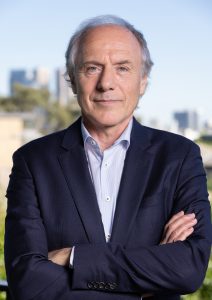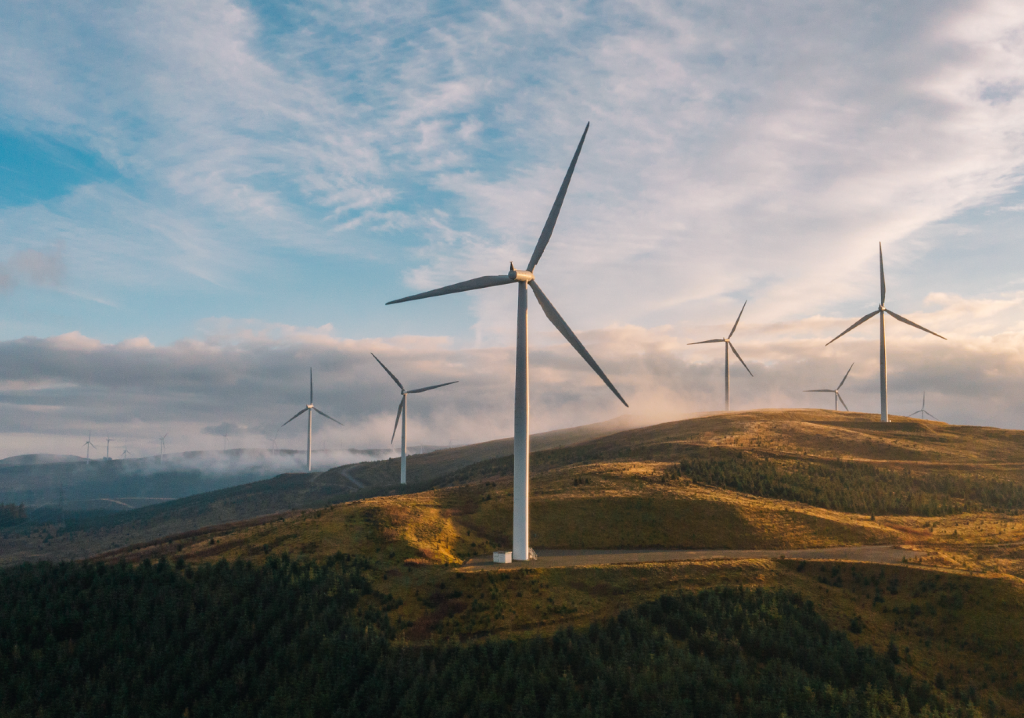Reaching net zero requires a much bigger investment in clean energy solutions, according to former Australian Chief Scientist Dr Alan Finkel.
Among the positive media coverage of his recently published book Powering Up: Unleashing the clean energy supply chain, Dr Alan Finkel AC received one or two pieces of criticism.
Warren Mundine, in the Australian Financial Review, questioned Finkel’s vision of “forests of wind farms carpeting hills and cliffs from sea to sky [and] endless arrays of solar panels disappearing like a mirage into the desert”.
Such a solution will not be tolerated by Traditional Owners, Mundine said, arguing instead for the commissioning of nuclear plants on the sites of decommissioned coal plants.

“There are people who feel that we should go nuclear and I would support that, because nuclear is very well behaved and generates zero emissions,” said Finkel, a neuroscientist, engineer, entrepreneur and philanthropist, and Australia’s Chief Scientist from 2016 to 2020.
“But with the best will in the world we couldn’t go nuclear before 2040, which means we’ll miss out on doing everything we need to do in the meantime.”
Dr Alan Finkel is a speaker at the upcoming Climate Smart Engineering conference — and there’s still time to register.
It’s not right to argue that we can move directly from coal to nuclear, Finkel said. The only solution that ticks as many boxes as possible in the race to zero emissions is to transition from coal to solar and wind — and then potentially introduce nuclear power.
A behavioural issue
Finkel suggested that Australia will never achieve 100 per cent integration of solar and wind power owing to prohibitive cost.
“The best that I can imagine is that we get to 90 per cent solar and wind, and the last 10 per cent comes from conventional gas generation – from peaking gas,” he said.
“If we did that — and had 90 per cent of our electricity come from renewables and 10 per cent from peaking gas — and we did that today, our electricity system would be one third of the emissions intensity of Denmark … and our emissions intensity would be less than nuclear France.”
However, as we move into a future powered by renewable energy, it also introduces a new problem.
Oil, coal, gas and hydro power are all well-behaved sources of generation, Finkel said. But solar and wind, while wonderful in their lack of emissions, are terribly behaved.
“We have to support them with storage,” he said. “We have to support them with transmission lines. We have to support them with overbuilding [and] smart digitalisation of the operating system.”
At the same time, Australia also uses oil, coal and gas for other things, such as chemical feedstock.
Being climate smart means finding alternatives in these areas — including by replacing metallurgical coal; replacing natural gas used in the creation of plastics, ammonia and fertilisers; and replacing fuel used for long-distance aviation.
A multi-pronged solution
“The solution is to use even more zero-emissions electricity, with water, to create hydrogen,” Finkel said.
“Hydrogen and carbon are the two essential elements for everything we need for plastics and for fuel. Maybe a little bit of oxygen and nitrogen thrown in, but in terms of heavy lifting, it’s the element carbon and the element hydrogen.
“If you want it to be truly carbon neutral, you [must] withdraw carbon dioxide from the atmosphere.”
This is all possible, Finkel said. There’s just one problem – it’s highly complex and very expensive.
“We need some smart engineers,” he said. “We are going to need smart engineering to take the cost out of carbon capture from the atmosphere, and build up the volume in an efficient fashion.”
There are just two weeks left before Climate Smart Engineering. Don’t miss out on being a part of the conversation — register now.
